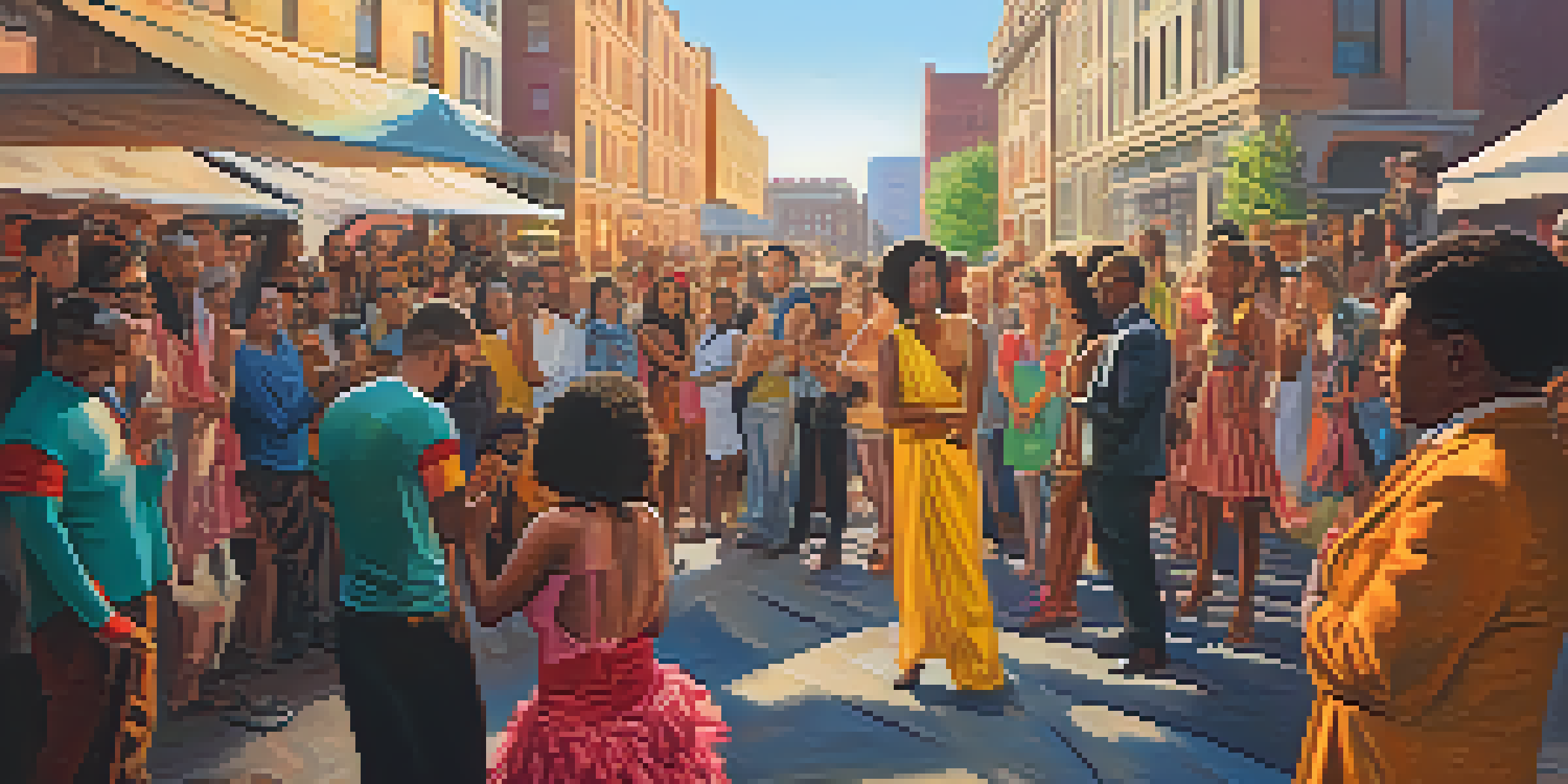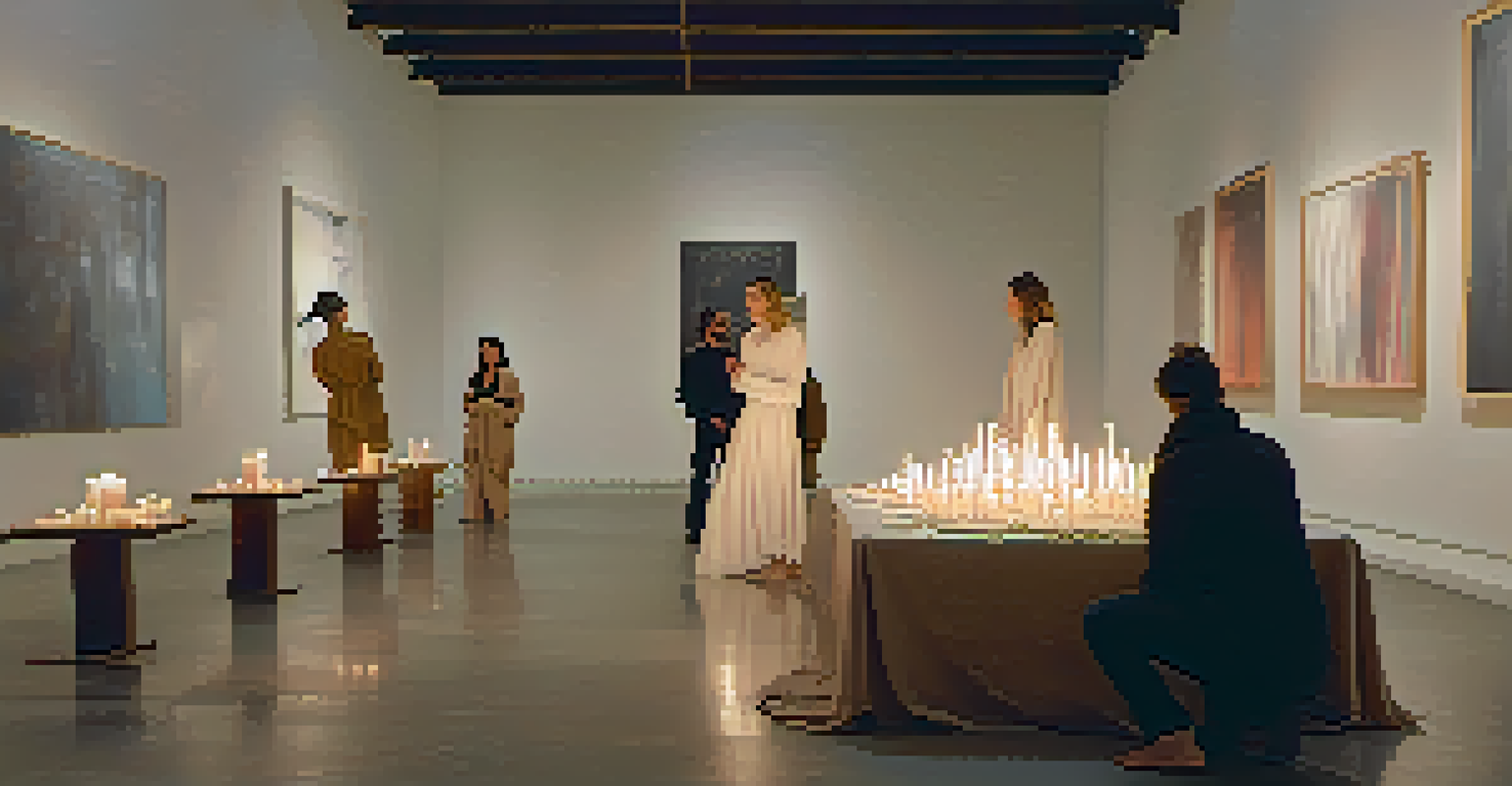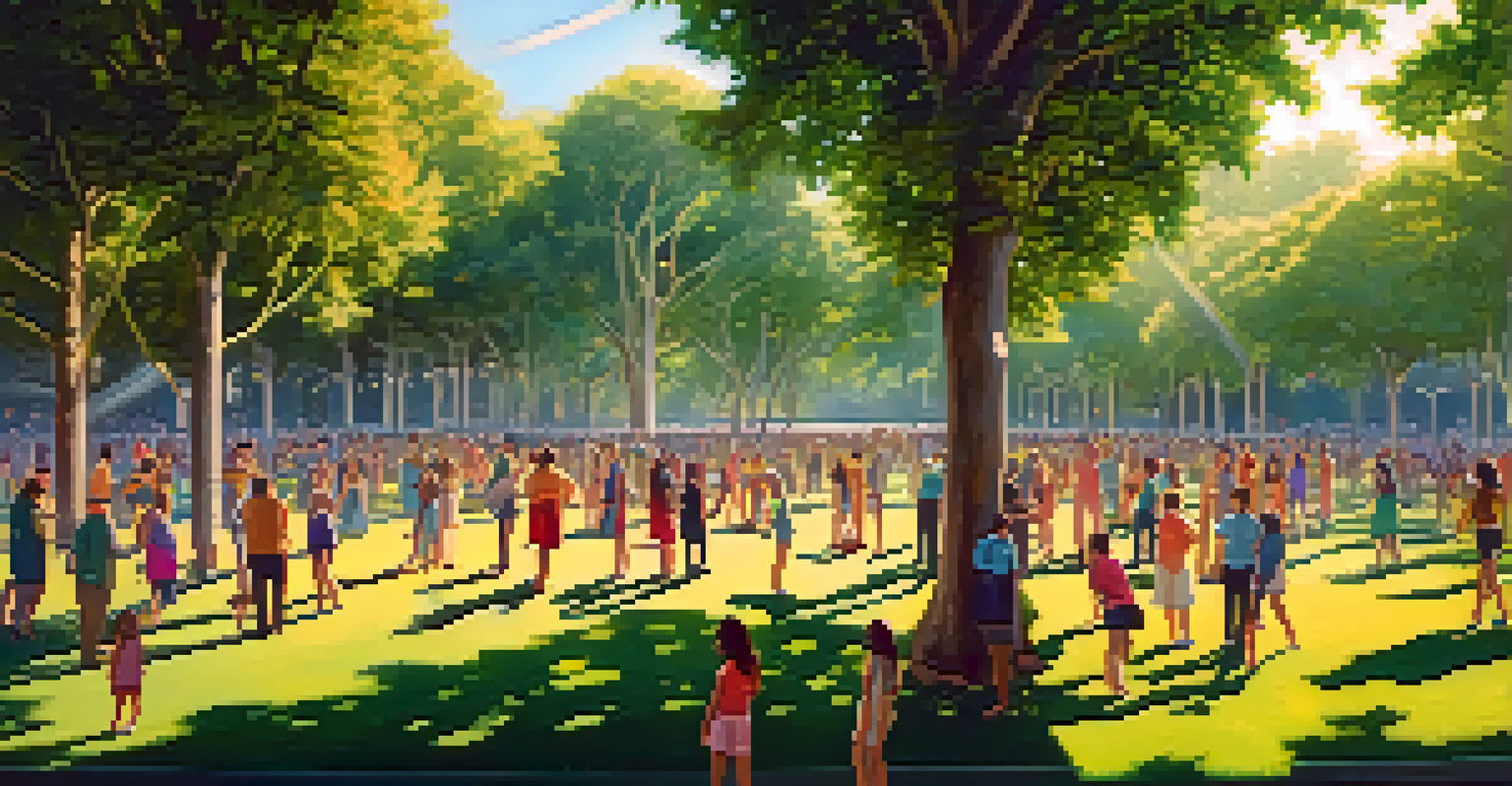Performance Art as a Medium for Political Expression Today

Understanding Performance Art in Contemporary Contexts
Performance art has evolved into a vibrant form of expression that engages audiences in unique ways. Unlike traditional art forms, it combines elements of theater, dance, and visual arts, often challenging societal norms. This dynamic medium allows artists to convey powerful messages through their bodies, actions, and environments.
Art is not a mirror to reflect the world, but a hammer with which to shape it.
In today's world, where political landscapes are constantly shifting, performance art serves as a mirror reflecting societal issues. Artists use their platforms to address themes like inequality, injustice, and human rights, making their work deeply relevant. By engaging viewers emotionally, performance art can provoke thought and inspire action.
Moreover, performance art often breaks down barriers between the artist and the audience, creating a shared experience. This interaction can foster a sense of community and encourage dialogue about pressing political matters. Ultimately, it transforms passive viewers into active participants in the political conversation.
Historical Roots of Performance Art as Political Expression
To appreciate the role of performance art in political expression today, it's essential to look back at its historical roots. The movement gained momentum in the 20th century, with artists like Marina Abramović and Yoko Ono using their bodies to challenge conventions. Their work often included themes of protest, reflecting the sociopolitical climate of their times.

For instance, during the Vietnam War, artists utilized performance to comment on the brutality of conflict and the anti-war movement. These early examples laid the groundwork for future generations of artists who would use performance as a means of social critique. They demonstrated how art could transcend traditional boundaries and engage with pressing political issues.
Performance Art Reflects Society
Performance art serves as a mirror to societal issues, engaging audiences emotionally to provoke thought and inspire action.
Today, this legacy continues as contemporary performance artists draw inspiration from their predecessors while addressing current global challenges. The blend of history and innovation allows for a rich dialogue between past and present, as artists explore new forms of expression and activism.
Notable Contemporary Performance Artists and Their Impact
Several contemporary performance artists have made significant strides in using their work for political expression. For instance, artist Tania Bruguera often focuses on themes of power and control, using her performances to create immersive experiences that challenge viewers' perceptions. Her work encourages participants to engage with their political realities directly.
The role of the artist is to make the revolution irresistible.
Similarly, artists like Ai Weiwei utilize performance to address human rights violations and the plight of refugees. His work often blurs the lines between art and activism, making powerful statements that resonate with audiences worldwide. These artists have become not just creators but also catalysts for change, sparking conversations and inspiring action.
These performances often go viral on social media, amplifying their reach and impact. This modern twist allows for a broader audience to engage with critical issues, making performance art a potent tool for political discourse in the digital age.
The Role of Social Media in Amplifying Performance Art
In today's digital landscape, social media plays a crucial role in amplifying political performance art. Platforms like Instagram, TikTok, and YouTube allow artists to share their performances with a global audience instantly. This accessibility not only broadens their reach but also democratizes art, enabling diverse voices to emerge.
Through short clips or live streams, artists can engage viewers in real-time, fostering immediate discussions about the issues they address. The viral nature of social media means that impactful performances can gain traction quickly, leading to increased awareness and activism. This interconnectedness transforms how art is experienced and understood.
Social Media Amplifies Impact
Social media platforms enable performance artists to share their work globally, fostering immediate discussions and increasing awareness of political issues.
Moreover, social media can create a sense of urgency, allowing artists to respond to political events as they unfold. This dynamic relationship between performance art and social media reflects a new era of activism, where art and technology converge to drive meaningful change.
Challenges Faced by Performance Artists in Political Spaces
While performance art can be a powerful medium for political expression, artists often face significant challenges. Censorship remains a major concern, particularly in repressive regimes where dissent is not tolerated. Artists may find their work suppressed or silenced, hindering their ability to convey important messages.
Additionally, funding for politically charged performances can be limited, as sponsors may hesitate to support controversial projects. This financial pressure can restrict an artist's creative freedom, forcing them to navigate a fine line between artistic integrity and commercial viability. The struggle for resources can stifle innovation and limit the scope of expression.
Despite these hurdles, many artists persist, driven by their commitment to social justice and change. Their resilience highlights the enduring power of performance art as a vehicle for political commentary, even in the face of adversity.
The Future of Performance Art in Political Discourse
As we look to the future, the potential for performance art as a medium for political expression remains vast. With ongoing global challenges such as climate change, inequality, and social justice, artists will continue to explore these themes through their work. The urgency of these issues ensures that performance art will remain a relevant and powerful tool for activism.
Moreover, as technology continues to evolve, new opportunities for expression will emerge. Virtual reality, augmented reality, and immersive experiences may redefine how performance art is created and consumed, allowing for deeper engagement with political themes. This evolution could lead to innovative forms of expression, pushing the boundaries of what performance can achieve.
Challenges in Political Expression
Performance artists often face censorship and funding limitations, which can hinder their ability to convey important political messages.
Ultimately, the intersection of art and activism will continue to inspire future generations of artists. As they harness the power of performance to address pressing issues, they will forge new paths in political discourse, reminding us all of the transformative potential of art.
Engaging Audiences: The Power of Interactive Performance Art
Interactive performance art invites audiences to become active participants, creating a unique space for engagement and dialogue. By breaking down the fourth wall, artists encourage viewers to reflect on their own experiences and beliefs. This approach not only makes the performance more relatable but also amplifies its political message.
For example, performances that involve audience participation can create a sense of community, fostering connections among individuals who may share similar concerns. This collective experience can lead to heightened awareness and motivation to take action on pressing political issues. It transforms passive observation into active involvement.

In this way, performance art becomes a catalyst for change, empowering individuals to voice their opinions and engage with the world around them. The interactive nature of this art form highlights the importance of collaboration and dialogue in the pursuit of social justice.